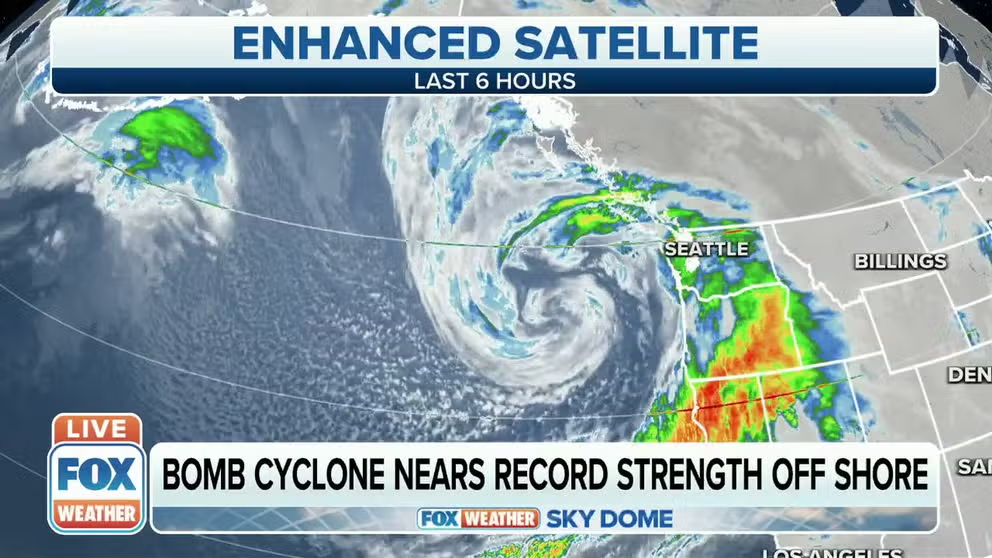Latest 'bomb cyclone' sets record for strongest storm off Pacific Northwest
The storm strengthened to 943 millibars for its central pressure reading Sunday morning, tying the all-time lowest central pressure measured for a storm in that region of the ocean near the Pacific Northwest coastline.
Bomb Cyclone ties record in Pacific Ocean
One of the strongest storms ever measured off the shores of the Pacific Northwest continued to swirl in the Pacific Ocean Sunday.
SEATTLE -- The second "bomb cyclone" to develop in the eastern Pacific Ocean in a week is now one for the record books.
The storm strengthened to 942.5 millibars for its central pressure reading Sunday morning, just squeaking by the all-time lowest central pressure measured for a storm in that region of the ocean near the Pacific Northwest coastline.
The only other storm to be measured at that level was Post-Tropical Cyclone Harriet in 1977, reaching 943 millibars.
But Harriet was much farther west -- out at about 140 degrees west longitude -- than where storms cause trouble in the Northwest.
For a better apples-to-apples comparison, we need to look for storms a little closer, as the University of British Columbia Professor Wolf Read did, limiting the scope to storms east of 132 degrees West.
"The storm to beat appears to be one of our major windstorm producers: (Nov 13-14), 1981," says Read, who has researched several Pacific Northwest wind storms.
He found the storm reached 947 millibars as a central pressure. "I know of no other extratropical cyclone to have exceeded this in the period of historical record," he said.
Storm #2 on the list of strongest known storms for the area is a Pacific Northwest windstorm from mid-November 1981. Central pressure: 947 hPa. Source: https://t.co/zYx5bkT6Ar pic.twitter.com/jgBM1kKnpF
— NWS Weather Prediction Center (@NWSWPC) October 24, 2021
Until Sunday.
For further perspective, a 943 millibar central pressure put the storm on par with pressures measured during major hurricanes had it been a tropical system. Hurricane Rick, also swirling in the eastern Pacific off Mexico's coast, had a central pressure of 980 millibars Sunday. Lower numbers indicate increased strength of the low pressure center. Standard pressure is 1013 millibars.
However, it's important to remember that while this is like a tropical system, there are no tropical characteristics, meaning it does not strengthen or organize like tropical systems typically do.
Why is this storm called a "Bomb Cyclone"?
The name comes from the meteorological term "bombogenesis," when a storm strengthens at least 24 millibars within 24 hours. A storm that achieves this mark becomes known as a "bomb cyclone."
"Bombogenesis is fairly common in the Pacific Ocean region because there is enough water surface area for strengthening. It has happened a few times on the Atlantic coastline; however, it is not as common there," said FOX Weather Meteorologist Stephen McCloud. "Forecasting this phenomenon is rather difficult to do especially when there are changes in forecast model runs. Most of the time, this happens in real-time situations. It is easy to pick out, especially on the satellite when you see bombogenesis occur."
This storm easily qualified, dropping 46 millibars in 24 hours, coming on the heels of Thursday's bomb cyclone that strengthened 50 millibars in 24 hours.
Could this storm get any stronger?
The current storm appears to have peaked at 942.5 and is now beginning to weaken as it drifts toward the British Columbia coast.
It will still pack quite a punch, with High Wind Warnings up along the Washington and Oregon coasts and several inches of rain expected to fall in northern California.
